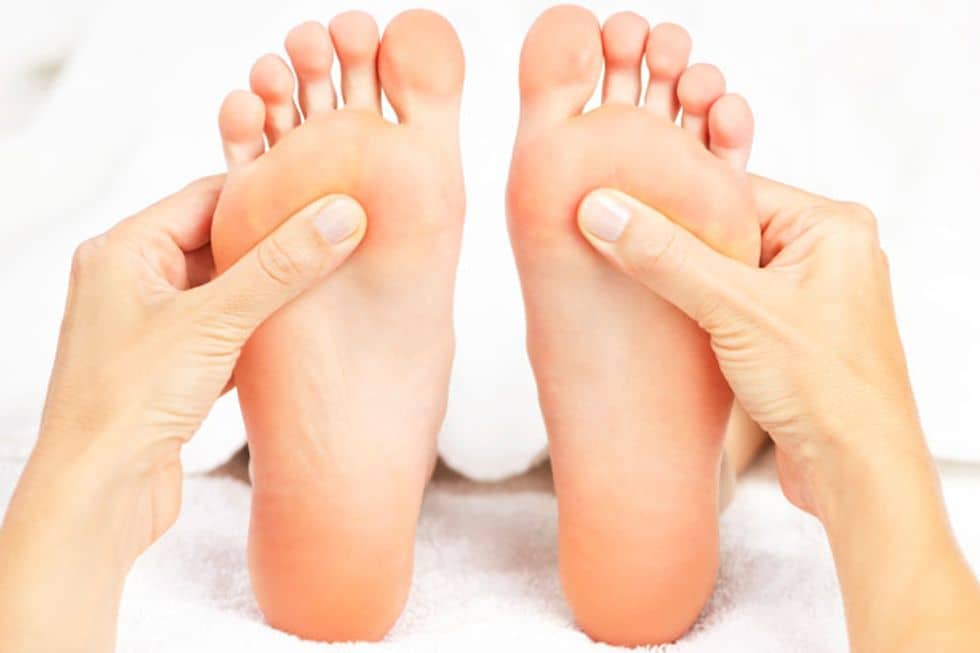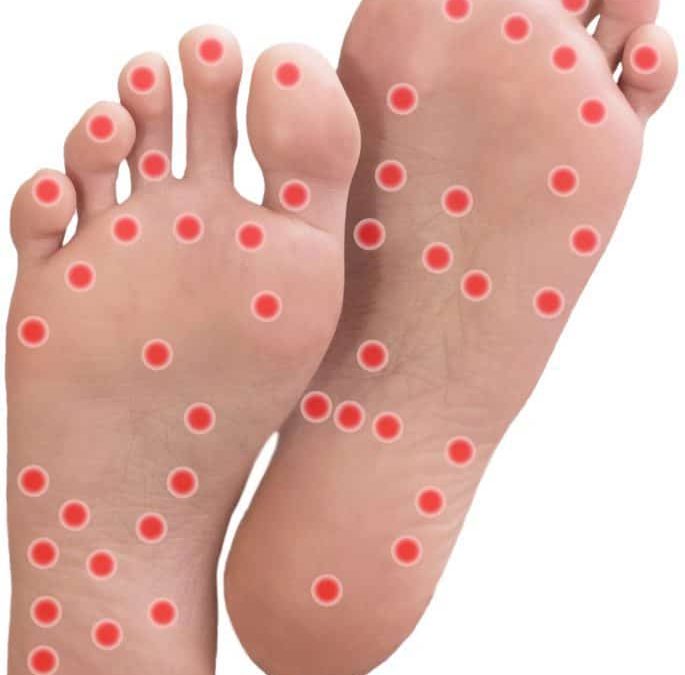
by Tirtha Acharya | Feb 20, 2022 | Health
What is reflexology/ Acupressure? The Principle of Reflexology
Reflexology is a type of massage that contains and applying varying degrees of pressure to the feet, ears, and hands. It has been more popular in recent years. You formulated this theory based on the notion that distinct biological components may relate to specific organs and body systems. Reflexologists may know as individuals who use this kind of healing. According to reflexologists, applying pressure to these points provides various health benefits for the person.
When applying pressure to specific body areas, reflexologists use foot charts to help them navigate their way. Many practitioners, such as chiropractors and physical therapists, provide reflexology services, often utilized in combination with other hands-on treatments.
How Does Reflexology Work?
In the opinion of reflexologists, reflexology may assist in the release of stress, which may aid in the healing and regeneration of the body. There is a range of possibilities when it comes to how this process works.
Reflexology works with the central nervous system.
Sir Henry Head and Sir Charles Sherrington did research in the 1890s that led to the development of this idea. For the first time, they were able to establish a neurological connection between the epidermis and the interior organs and the fact that the whole nervous system reacts to a stimulus.
Based on the notion that applying pressure to the feet, hands, or ears stimulates the peripheral nerves in these extremities to send a calming message to the central nervous system, reflexology has become more prevalent in recent years.
By using reflexology, you may educate your body to modify the level of tension in your body. Additionally, it promotes overall relaxation puts internal organs and their systems in optimum functioning. The circulatory and neuropeptide systems in the body are among the impacted methods, all of which are good.
Reflexology helps to relieve pain by lowering stress levels.
Another theory that may assist in explaining how reflexology could be able to give pain relief is the gate control hypothesis, which the Neuro matrix theory may also refer to as of pain in recent years. According to this point of view, pain is a subjective sensation created by your brain’s neurons. Although the brain may work independently of sensory input, it can also make unpleasant feelings in response to emotional or cognitive factors.
It may refer to as activation of the autonomic nervous system.
Therefore, factors that influence your sense of pain, such as your mood, or external variables such as stress, may affect your feeling of pain therefore. According to this concept, reflexology may aid in the relief of pain by reducing blood pressure and elevating emotions during treatment.
Reflexology keeps the body’s vital energy flow.
Another theory asserts that the human body can harness “vital energy.” The absence of treatment for stress may result in energy congestion, leading to decreased bodily functions that can finally end in illness. According to this belief, it contributes to the maintenance of energy flow.
The Zone Theory may use to begin the treatment
It may believe that the Zone Theory, which states that the body may divide into ten vertical zones, was responsible for the establishment of reflexology as a unique kind of medical treatment. Each zone may represent a separate component of the body, ranging from the fingertips and toes to the crown of the head. Example: If you are standing up and placing your hands on the insides of both thighs (palms facing down), zone 1 includes your thumb and great toe.
On either side of the torso, the index finger and second toe, for example, would indicate zone 2; and so on through the body. According to reflexology theory, you may utilize a point or area on the feet or hands to access any organ, valve, muscle, or other structure that is situated within a reflexology zone. It is possible, for example, to identify the eye point by working between toes 2 and 3 or between fingers 2 and 3. According to previous statements, it may think that the neurological system is responsible for the connections between pressure locations and other parts of the body.
If you like to sign up for the reflexology training, you can see the details here and email us on nepalyogahome@gmail.com.

by Tirtha Acharya | Feb 19, 2022 | Uncategorized
Main Principles of Reflexology and Techniques
Using Principles of the Reflexology is a gentle approach, a fascinating ancient scientific method that has been around for a long time. Reflexology is a highly effective sort of foot massage. A combination of science and art is involved. Science and art are intertwined in this field since they are based on empirical evidence from human biology and neurology studies.
A minor component of the body, they are. A single reflex represents every body part, organ, and gland. As a whole, the body’s anatomical design is highly similar to how it functions. It has to do with the way the feet move.
Main Principles of Reflexology
The reflex zones are stimulated using special thumb and finger pressure techniques. As we apply our healing powers, physiological changes occur in our bodies. The Principles of Reflexology claims that when an organ or body part is under stress or weak, the area that corresponds to that organ or body part will be more sensitive.
The ancient Chinese Meridians
About 3,000 years ago, the Chinese discovered the meridian system, and since then, it has grown from obscurity to become a well-known and extensively investigated field of study.
They resemble but are not the same as the reflexology zones. Every human being has twelve primary meridians, all of which go from one side of the body to the other, and each meridian has its mirror image.
Quantum physics of the human body
For a long time, people thought of the human body as a machine composed of mechanical pieces. According to Sir Isaac Newton, the more one studies nature, the more mechanical or predictable things should be and how they behave.
The quantum physics theory explains how several energy forces interact to form a whole. Energy and movement make up people, and health is a state of equilibrium between this energy and the organism’s internal and external settings.
12 Principles of Reflexology and Techniques
Foot massages can be done on yourself or someone else, and there are 12 Principles of reflexology and Technique to do it.
1. Warm-up twists
There are many ways to start a foot massage, but warm-up twists are one way to do it. To use this principles of reflexology:
- The foot should be held in the palms of both hands.
- Push the left foot back while extending the right foot forward.
- When you make your left foot back, pull your right foot forward.
- Keep twisting your body, moving your hands from your ankle to your toes.
2. Arch Rubs
It is possible to use this technique to massage the bottom of the foot. To use Arch rubs method:
- You should hold the top of your foot.
3. The toe bends
It may help the feet be more flexible. To use toe bends foot massage technique:
- With one hand, hold the heel
4. Foot spread
There is a chance that spreading food may help the foot grow naturally. To use Foot spread principles of Reflexology:
Foot massages method:
- Hold each side of your foot.
- Push each side of your foot outward
5. Heel Squeeze Technique
To relieve stress at the back of the foot, you may want to squeeze the heel. It may help. To use this method:
- Keep holding the top of your foot.
- On the other hand, hold the back of the heel
6. Knuckle or first work
Fist work or Knuckle is a way to get the bottom of your foot massage with your hands. To use this principles of Reflexology:
- With one hand, hold your back of the foot.
- On the other hand, have a knuckle or full fist against the bottom of the foot.
- Use your Knuckle or fist for kneading the bottom of your foot with moderate pressure until it is smooth.
7. Top and side circles
Top and side circling is a simple way to massage your feet. To use:
- With both hands, hold your foot from below.
- Make a circle with your fingers all the way around your ankles, one on each side of your torso.
- Keep circling the fingers, all the way to the toes
- Pay attention to how far apart each tendon is from the next.
8. Thumb work
Thumb work is another way to get a foot massage. You can do it on the bottom of your foot. To use this method:
- One hand on the side of both feet
- To do this, place your finger on top of your foot.
- On the toe pads, Thumbs under each foot,
- Use your thumbs to move down each toe, with a bit of pressure.
9. Pressure points
Another way to get a good foot massage is to press points on the instep. To use this method:
- On the other hand, the thumb press and let go of the top of the instep.
10. Achilles massage
A massage of the Achilles tendon may help to relieve stress on it. To use Achilles massage method:
- Hold on to the Achilles tendon with the other hand between your thumb and index finger.
11. Toe massage
Toe massage is very helpful and may relieve tension, and it could also help you sleep better at night. To use Toe massage method:
- Hold the bottom of your foot with one hand.
- With the fingers of the other hand, gently tug, twist, and pull each toe with your other hand.
- Move from the outside toes to the inside toes
12. Finishing strokes
At the end of foot massage finishing strokes, people can use finishing strokes to ensure the message is done well enough. To use this method:
- The foot should be held in the palms of both hands.
- Gently press the left side of the foot back while pulling the bottom half of the foot forward.
- When you do this, make the left side of your foot back while you make the right side forward.


